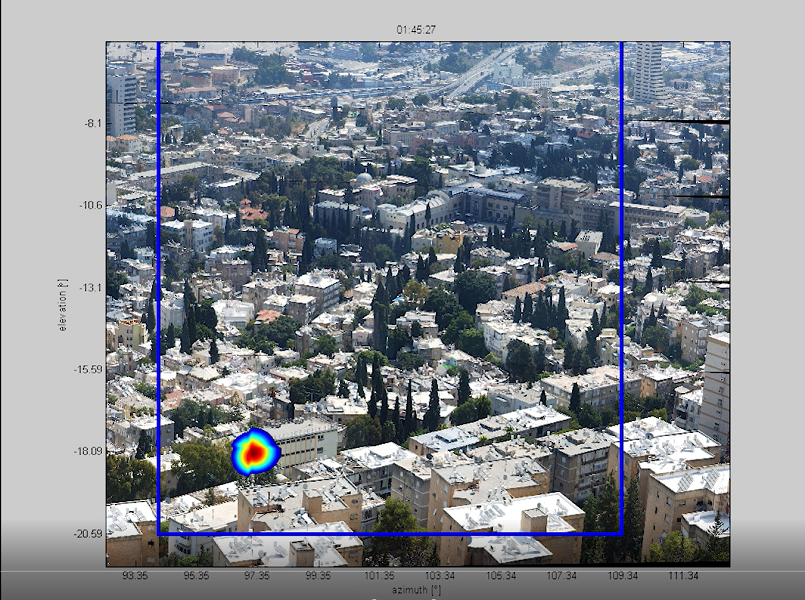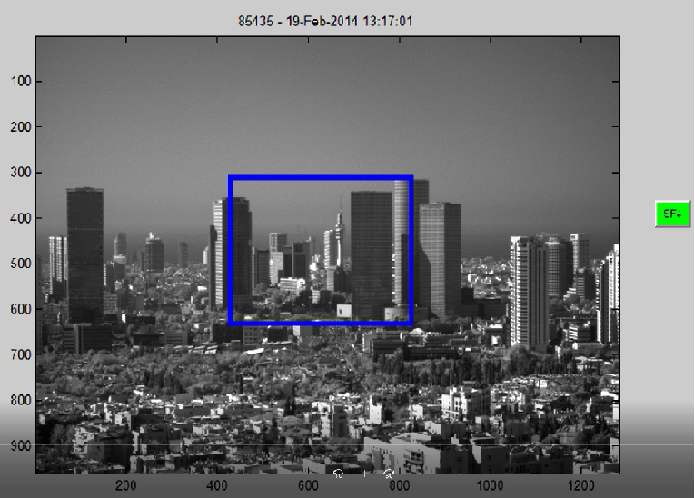The R&D process of standoff methods is based on carefully-designed techniques that use light sources (e.g., lasers), passive imaging, spectroscopy, data processing, detection algorithms and operations research for a wide range of scenarios. The Environmental Physics Department supports all research phases – from basic and applied research, through system engineering and prototyping, through transition to ready-to-go instrumentation.
The wide "know-how" and the specialized background of the group, provide the optimal solution that meets all possible applicative needs:
-
Throughout the UV-VIS-NIR-SWIR-MWIR-LWIR-THz spectral bands. Detection of hazardous substances, from ranges of kilometers down to meters.
-
Ground-based or airborne, autonomous or manual remote sensing of all phases; gaseous plumes and aerosol clouds (liquids and solids), on visible surfaces as well as concealed objects.
-
For environmental monitoring: smoke stack emissions, fugitive emissions, release of hazardous gases , forensic and medical applications.
Specific equipment includes:
-
HyperCam - LWIR hyperspectral imager
-
SWIR hyperspectral imager
-
SR5000N – fast spectro-radiometer from the VIS to the LWIR band.
-
Fast LWIR multispectral camera
-
Thermographic IR cameras
-
UV camera
-
Tunable quantum cascade laser (QCL) in the LWIR
-
YAG laser (up to 4th harmonic in the UV)
We are a leader in our field with proven delivery success in gas and atmospheric aerosol plume detection with hyperspectral and multispectral imagery (both ground-based and airborne), detection of gases in confined spaces using an external cavity tunable quantum cascade laser, standoff detection of biological substances using laser-induced fluorescence and much more. Many research activities have been conducted with leading industrial firms.
Related publictaions:
-
Shoshanim, Ofir, Peri, David and Egert, Smadar. "High Resolution Spectroscopic Study in the Terahertz."
IEEE Sensors Journal 14.2 (2014): 547-553.
Active remote sensing of solid and liquid spills
One of the main concerns in environmental science is ground pollution by liquids and solids. Using optical-spectroscopy we can reliably identify these pollutants in large areas. Currently, we employ EC-QCL to study the nature of light scattered from a droplet or particle of target material, as technique that is accurate and sensitive. Another approach that we are looking into is Hyperspectral imaging in the SWIR.
Studying atmospheric aerosol cloud dynamics with hyper-spectral LIF-LIDAR
Experimental setup includes an aerosol dynamic cell for generating and monitoring aerosol clouds and a hyper-spectral LIF-LIDAR that characterizes its instantaneous fluorescence spectra.
The setup is instantaneously controlled and monitored for the: fluorescence anisotropy, the pulse power (pre- and post-cell), the generation and classification of the aerosol phase, and the ambient conditions inside the cell.
Standoff detection of atmospheric bio-aerosol using hyper-spectral LIF-LIDAR
The outcome of the research of aerosol dynamics enabled the design of a system based on LIF-LIDAR, aimed at identifying bio-aerosols. The system development has reached the stage of a prototype, with the following properties: transportable (90×60×18 cm3, 54 kg), operates 24/7 at a distance from the target of up to a few kilometers, can track an aerosol cloud as it moves through the atmosphere. This prototype was successfully operated at various campaigns over the world.
Active remote sensing in large public sites
Release of toxic gases and vapor into closed buildings may cause a great amount of damage in cases of industrial accidents and terror attacks. This is due to the fact that material dilution is very slow compared to an open environment. Hence, we studied and developed a system based on EC-QCL to provide early warning in such cases.
Hyperspectral remote sensing in the longwave IR (LWIR)
Another system for remote sensing of environmental pollutants is based on LWIR-HSI. This system can identify materials (gaseous and aerosol plumes) providing accurate visual information regarding the location of the material. We have developed a highly-effective real-time data analysis algorithm to detect, identify and track the target material.



Movie: Multispectral remote sensing: identification gaseous plume


Movie: Hyperspectral remote sensing: identification and tracking gaseous plume